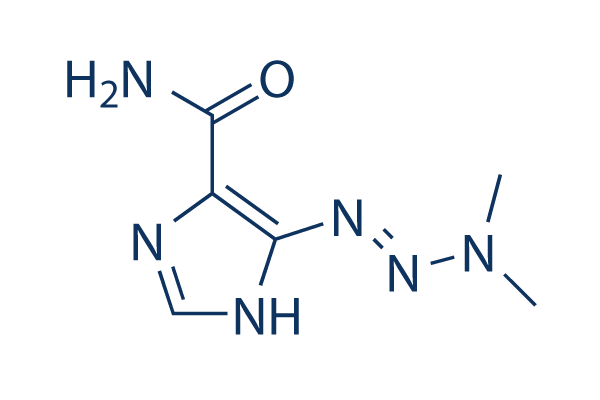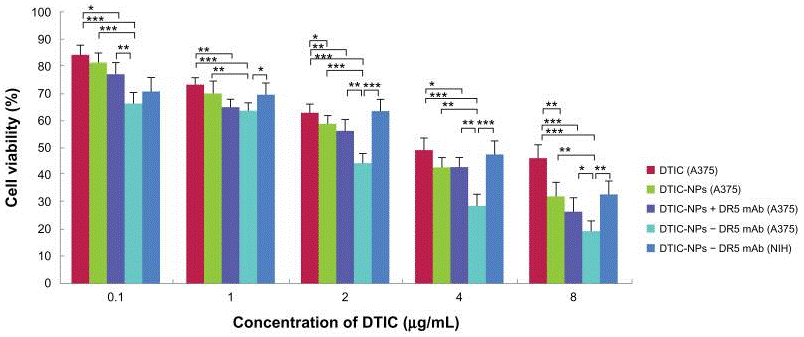
- Bioactive Compounds
- By Signaling Pathways
- PI3K/Akt/mTOR
- Epigenetics
- Methylation
- Immunology & Inflammation
- Protein Tyrosine Kinase
- Angiogenesis
- Apoptosis
- Autophagy
- ER stress & UPR
- JAK/STAT
- MAPK
- Cytoskeletal Signaling
- Cell Cycle
- TGF-beta/Smad
- Compound Libraries
- Popular Compound Libraries
- Customize Library
- Clinical and FDA-approved Related
- Bioactive Compound Libraries
- Inhibitor Related
- Natural Product Related
- Metabolism Related
- Cell Death Related
- By Signaling Pathway
- By Disease
- Anti-infection and Antiviral Related
- Neuronal and Immunology Related
- Fragment and Covalent Related
- FDA-approved Drug Library
- FDA-approved & Passed Phase I Drug Library
- Preclinical/Clinical Compound Library
- Bioactive Compound Library-I
- Bioactive Compound Library-Ⅱ
- Kinase Inhibitor Library
- Express-Pick Library
- Natural Product Library
- Human Endogenous Metabolite Compound Library
- Alkaloid Compound LibraryNew
- Angiogenesis Related compound Library
- Anti-Aging Compound Library
- Anti-alzheimer Disease Compound Library
- Antibiotics compound Library
- Anti-cancer Compound Library
- Anti-cancer Compound Library-Ⅱ
- Anti-cancer Metabolism Compound Library
- Anti-Cardiovascular Disease Compound Library
- Anti-diabetic Compound Library
- Anti-infection Compound Library
- Antioxidant Compound Library
- Anti-parasitic Compound Library
- Antiviral Compound Library
- Apoptosis Compound Library
- Autophagy Compound Library
- Calcium Channel Blocker LibraryNew
- Cambridge Cancer Compound Library
- Carbohydrate Metabolism Compound LibraryNew
- Cell Cycle compound library
- CNS-Penetrant Compound Library
- Covalent Inhibitor Library
- Cytokine Inhibitor LibraryNew
- Cytoskeletal Signaling Pathway Compound Library
- DNA Damage/DNA Repair compound Library
- Drug-like Compound Library
- Endoplasmic Reticulum Stress Compound Library
- Epigenetics Compound Library
- Exosome Secretion Related Compound LibraryNew
- FDA-approved Anticancer Drug LibraryNew
- Ferroptosis Compound Library
- Flavonoid Compound Library
- Fragment Library
- Glutamine Metabolism Compound Library
- Glycolysis Compound Library
- GPCR Compound Library
- Gut Microbial Metabolite Library
- HIF-1 Signaling Pathway Compound Library
- Highly Selective Inhibitor Library
- Histone modification compound library
- HTS Library for Drug Discovery
- Human Hormone Related Compound LibraryNew
- Human Transcription Factor Compound LibraryNew
- Immunology/Inflammation Compound Library
- Inhibitor Library
- Ion Channel Ligand Library
- JAK/STAT compound library
- Lipid Metabolism Compound LibraryNew
- Macrocyclic Compound Library
- MAPK Inhibitor Library
- Medicine Food Homology Compound Library
- Metabolism Compound Library
- Methylation Compound Library
- Mouse Metabolite Compound LibraryNew
- Natural Organic Compound Library
- Neuronal Signaling Compound Library
- NF-κB Signaling Compound Library
- Nucleoside Analogue Library
- Obesity Compound Library
- Oxidative Stress Compound LibraryNew
- Plant Extract Library
- Phenotypic Screening Library
- PI3K/Akt Inhibitor Library
- Protease Inhibitor Library
- Protein-protein Interaction Inhibitor Library
- Pyroptosis Compound Library
- Small Molecule Immuno-Oncology Compound Library
- Mitochondria-Targeted Compound LibraryNew
- Stem Cell Differentiation Compound LibraryNew
- Stem Cell Signaling Compound Library
- Natural Phenol Compound LibraryNew
- Natural Terpenoid Compound LibraryNew
- TGF-beta/Smad compound library
- Traditional Chinese Medicine Library
- Tyrosine Kinase Inhibitor Library
- Ubiquitination Compound Library
-
Cherry Picking
You can personalize your library with chemicals from within Selleck's inventory. Build the right library for your research endeavors by choosing from compounds in all of our available libraries.
Please contact us at [email protected] to customize your library.
You could select:
- Antibodies
- Bioreagents
- qPCR
- 2x SYBR Green qPCR Master Mix
- 2x SYBR Green qPCR Master Mix(Low ROX)
- 2x SYBR Green qPCR Master Mix(High ROX)
- Protein Assay
- Protein A/G Magnetic Beads for IP
- Anti-Flag magnetic beads
- Anti-Flag Affinity Gel
- Anti-Myc magnetic beads
- Anti-HA magnetic beads
- Poly FLAG Peptide lyophilized powder
- Protease Inhibitor Cocktail
- Protease Inhibitor Cocktail (EDTA-Free, 100X in DMSO)
- Phosphatase Inhibitor Cocktail (2 Tubes, 100X)
- Cell Biology
- Cell Counting Kit-8 (CCK-8)
- Animal Experiment
- Mouse Direct PCR Kit (For Genotyping)
- New Products
- Contact Us
Dacarbazine
Synonyms: DTIC-Dome, Imidazole Carboxamide,NSC-45388
Dacarbazine is a triazene derivative with antineoplastic activity. Dacarbazine alkylates and cross-links DNA during all phases of the cell cycle, resulting in disruption of DNA function, cell cycle arrest, and apoptosis; used in the treatment of various cancers.

Dacarbazine Chemical Structure
CAS: 4342-03-4
Selleck's Dacarbazine has been cited by 14 publications
Purity & Quality Control
Batch:
Purity:
99.99%
99.99
Dacarbazine Related Products
Choose Selective Antineoplastic and Immunosuppressive Antibiotics Inhibitors
Biological Activity
| Description | Dacarbazine is a triazene derivative with antineoplastic activity. Dacarbazine alkylates and cross-links DNA during all phases of the cell cycle, resulting in disruption of DNA function, cell cycle arrest, and apoptosis; used in the treatment of various cancers. | |
|---|---|---|
| Targets |
|
| In vitro | ||||
| In vitro | Treatment of Dacarbazine sensitizes melanomas to lysis of peptide-specific CTL and it is is mediated through Fas-independent pathway[2]. | |||
|---|---|---|---|---|
| Cell Research | Cell lines | UACC903 (UACC) cells | ||
| Concentrations | 20 μM | |||
| Incubation Time | 48 h | |||
| Method | Apotosis assay: UACC903 (UACC) cells treated with or without DTIC (20 μM) for 48 h are incubated with agonist anti-Fas Ab, CH-11 (500 ng/ml), for 5 and 16 h, respectively. To distinguish whether death/apoptosis is mediated by FasR, blocking anti-Fas Ab ZB4 (2 mg/ml) is added in the corresponding groups. At the end of incubation, cells are harvested and stained with propidium iodide and FITC-annexin V (BD PharMingen) for detecting apoptosis according to the instruction provided by the company. Ten thousand cells from each group are collected, and dead and apoptotic cells are analyzed without gating using CellQuest software. |
|||
| Experimental Result Images | Methods | Biomarkers | Images | PMID |
| Western blot | ATM / p-ATM / p21(Waf1/Cip1) / Survivin |

|
27632933 | |
| Growth inhibition assay | Cell viability |

|
21976975 | |
| In Vivo | ||
| In vivo | Treatment of combination of Axitinib and DTIC demonstrates significant antitumor activity against melanoma flank xenografts, reduces tumor cell proliferation and decreases the area of tumor necrosis and increases apoptosis. It also reduces meta-tasis-related factors and prolongs lifespan in mice[3]. | |
|---|---|---|
| Animal Research | Animal Models | B16F1 melanoma xenograft model(C57BL/6 mice background) |
| Dosages | 80 mg/kg | |
| Administration | i.p. | |
| NCT Number | Recruitment | Conditions | Sponsor/Collaborators | Start Date | Phases |
|---|---|---|---|---|---|
| NCT03761095 | Active not recruiting | Leiomyosarcoma |
PTC Therapeutics |
March 13 2019 | Phase 1 |
| NCT01974752 | Completed | Metastatic|Uveal Melanoma |
AstraZeneca |
April 2014 | Phase 3 |
Chemical Information & Solubility
| Molecular Weight | 182.18 | Formula | C6H10N6O |
| CAS No. | 4342-03-4 | SDF | Download Dacarbazine SDF |
| Smiles | CN(C)N=NC1=C(NC=N1)C(=O)N | ||
| Storage (From the date of receipt) | |||
|
In vitro |
DMSO : 3 mg/mL ( (16.46 mM); Moisture-absorbing DMSO reduces solubility. Please use fresh DMSO.) Water : Insoluble Ethanol : Insoluble |
Molecular Weight Calculator |
|
In vivo Add solvents to the product individually and in order. |
In vivo Formulation Calculator |
||||
Preparing Stock Solutions
Molarity Calculator
In vivo Formulation Calculator (Clear solution)
Step 1: Enter information below (Recommended: An additional animal making an allowance for loss during the experiment)
mg/kg
g
μL
Step 2: Enter the in vivo formulation (This is only the calculator, not formulation. Please contact us first if there is no in vivo formulation at the solubility Section.)
% DMSO
%
% Tween 80
% ddH2O
%DMSO
%
Calculation results:
Working concentration: mg/ml;
Method for preparing DMSO master liquid: mg drug pre-dissolved in μL DMSO ( Master liquid concentration mg/mL, Please contact us first if the concentration exceeds the DMSO solubility of the batch of drug. )
Method for preparing in vivo formulation: Take μL DMSO master liquid, next addμL PEG300, mix and clarify, next addμL Tween 80, mix and clarify, next add μL ddH2O, mix and clarify.
Method for preparing in vivo formulation: Take μL DMSO master liquid, next add μL Corn oil, mix and clarify.
Note: 1. Please make sure the liquid is clear before adding the next solvent.
2. Be sure to add the solvent(s) in order. You must ensure that the solution obtained, in the previous addition, is a clear solution before proceeding to add the next solvent. Physical methods such
as vortex, ultrasound or hot water bath can be used to aid dissolving.
Tech Support
Answers to questions you may have can be found in the inhibitor handling instructions. Topics include how to prepare stock solutions, how to store inhibitors, and issues that need special attention for cell-based assays and animal experiments.
Tel: +1-832-582-8158 Ext:3
If you have any other enquiries, please leave a message.
* Indicates a Required Field
Frequently Asked Questions
Question 1:
Could you please help me test some common vehicles for S1221 in vivo experiments?
Answer:
S1221 can dissolve in 0.5% CMC Na at 30mg/ml as a suspension. After stayed for a period of time, the powder will drop down to the bottom of the tube, so please vortex well before use.
Tags: buy Dacarbazine | Dacarbazine ic50 | Dacarbazine price | Dacarbazine cost | Dacarbazine solubility dmso | Dacarbazine purchase | Dacarbazine manufacturer | Dacarbazine research buy | Dacarbazine order | Dacarbazine mouse | Dacarbazine chemical structure | Dacarbazine mw | Dacarbazine molecular weight | Dacarbazine datasheet | Dacarbazine supplier | Dacarbazine in vitro | Dacarbazine cell line | Dacarbazine concentration | Dacarbazine nmr







































